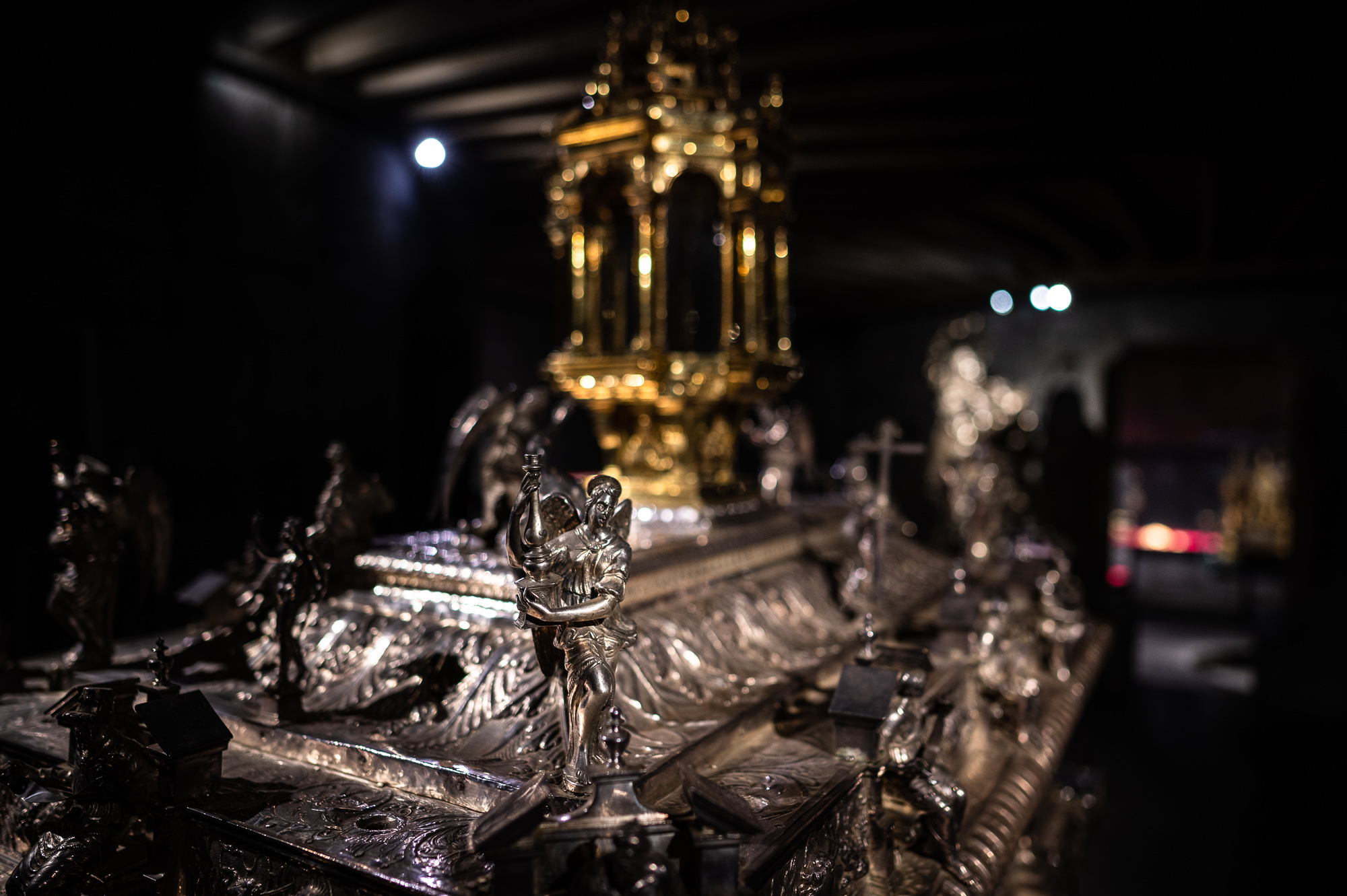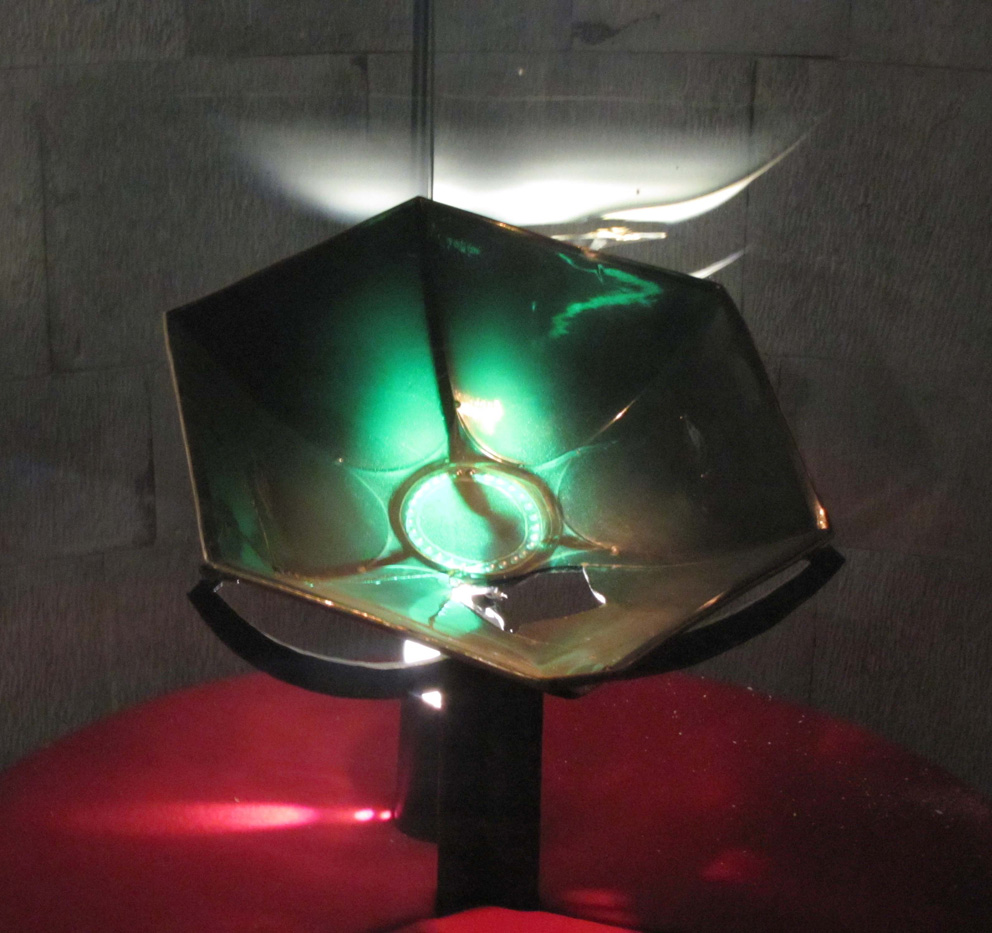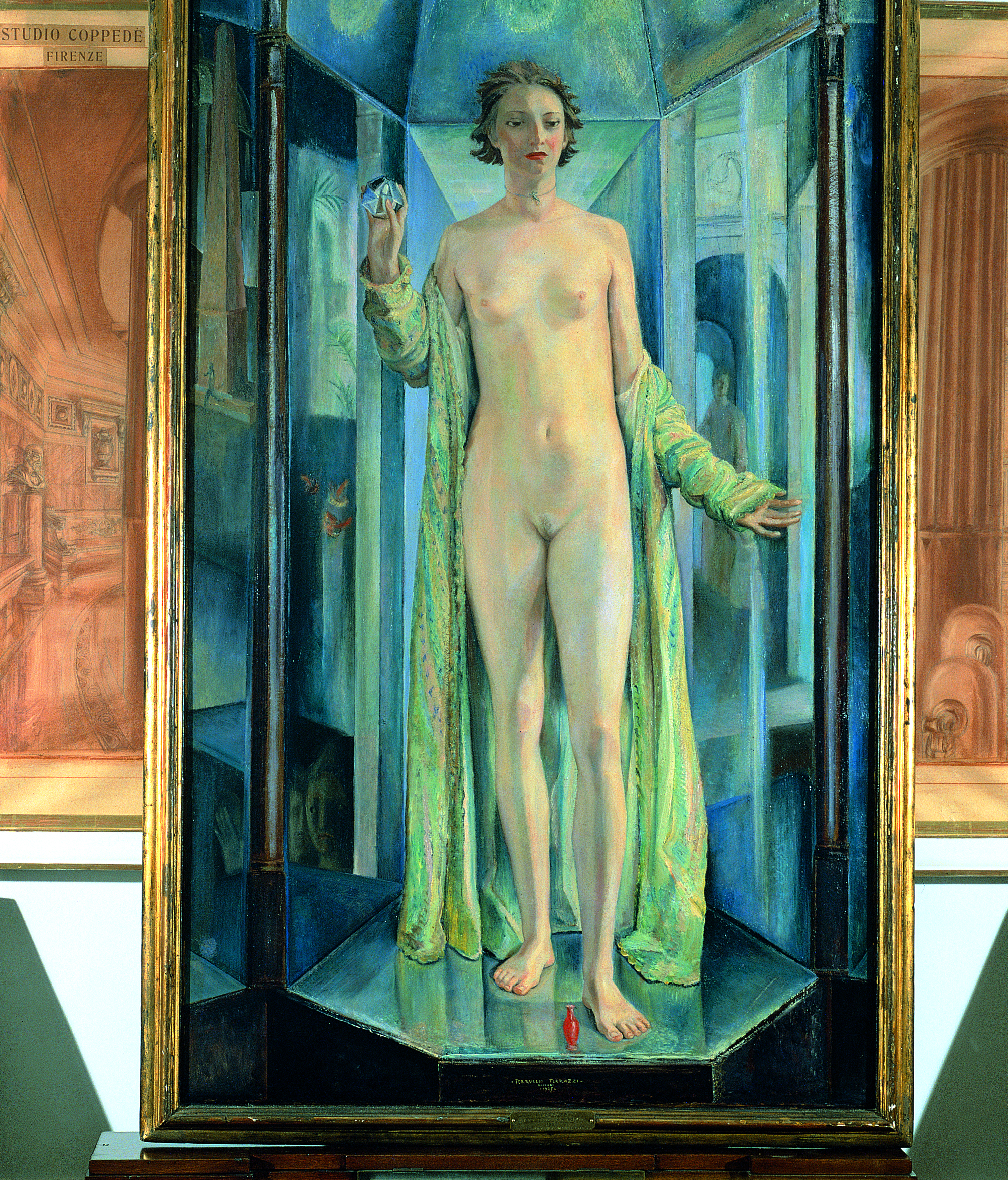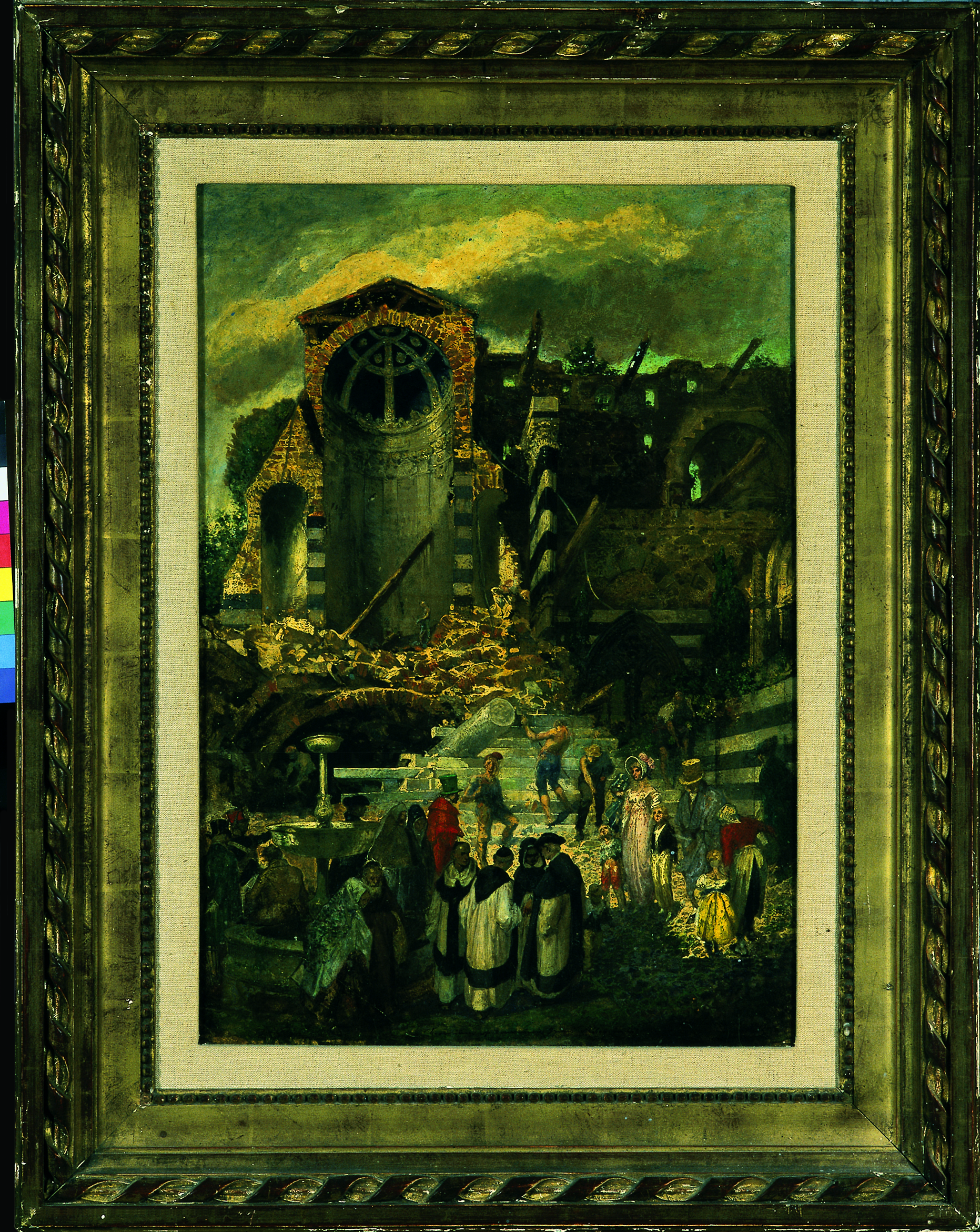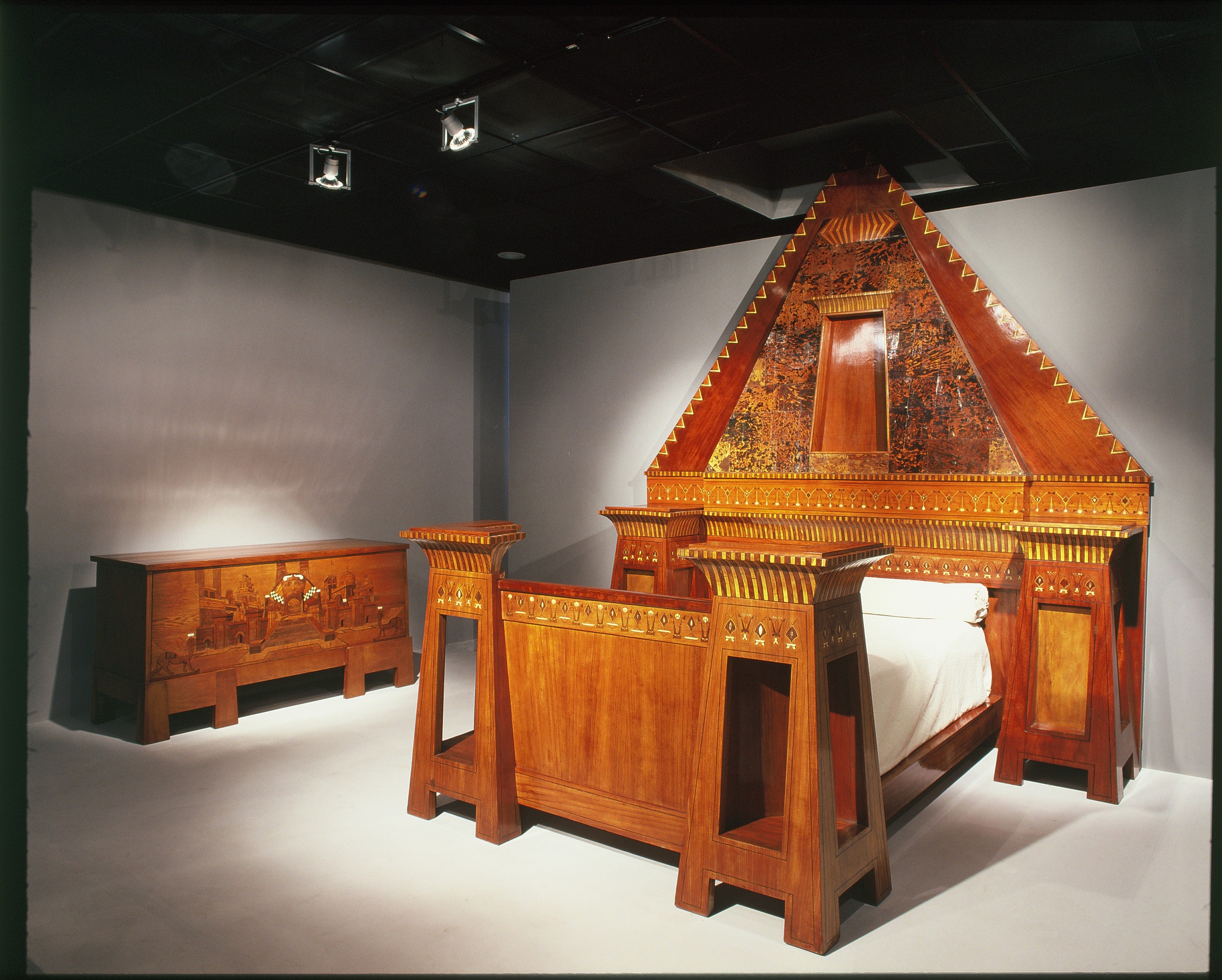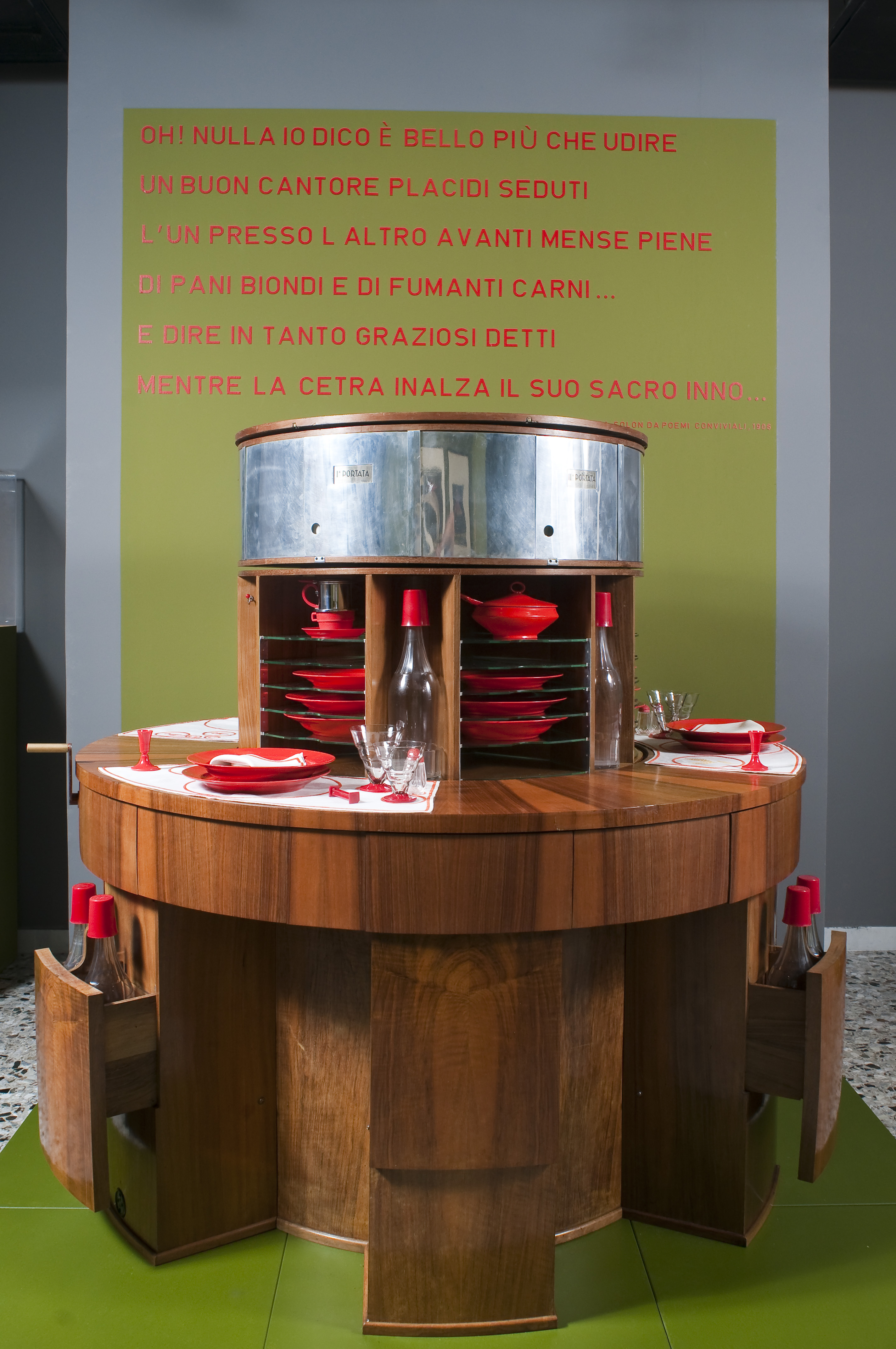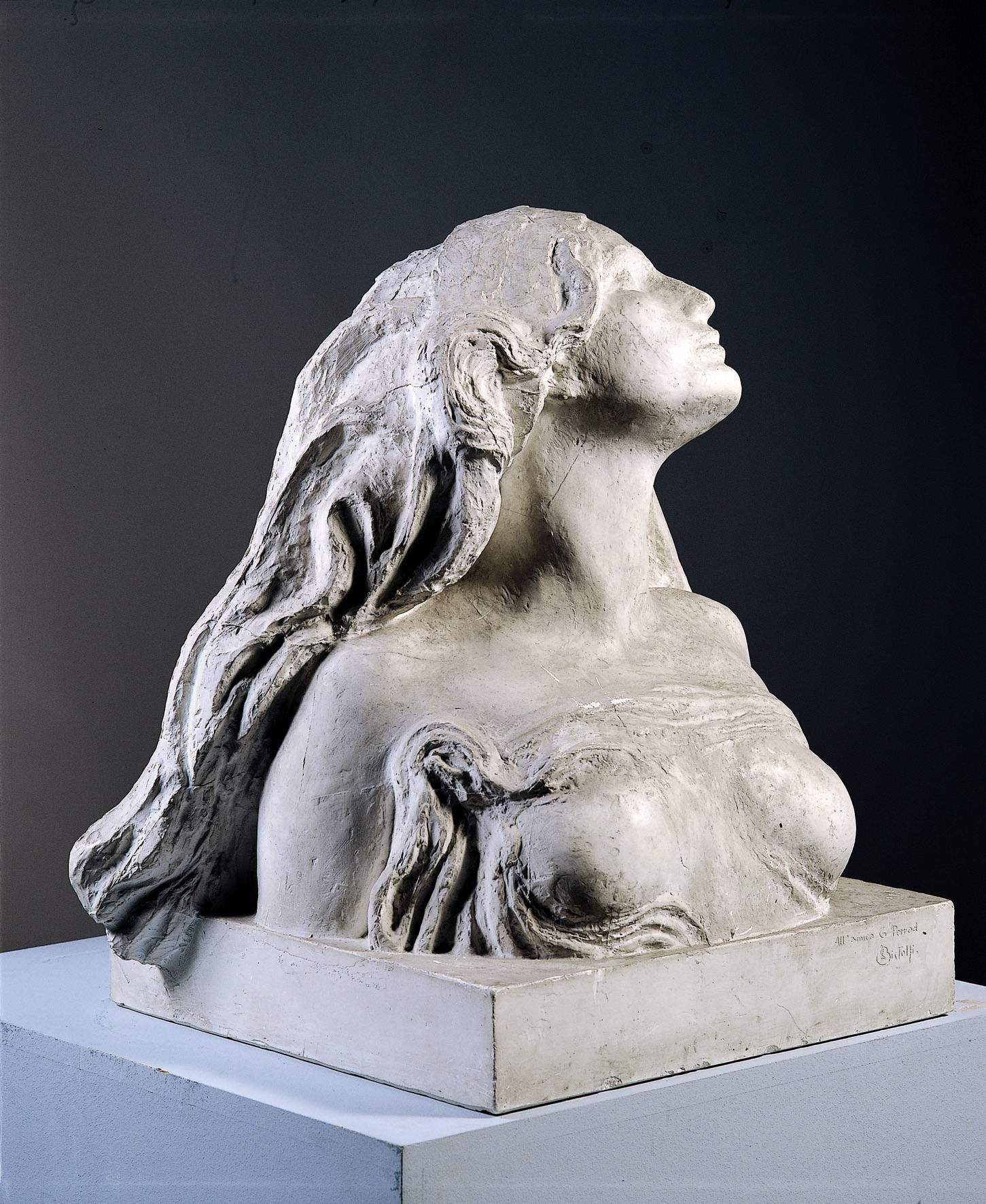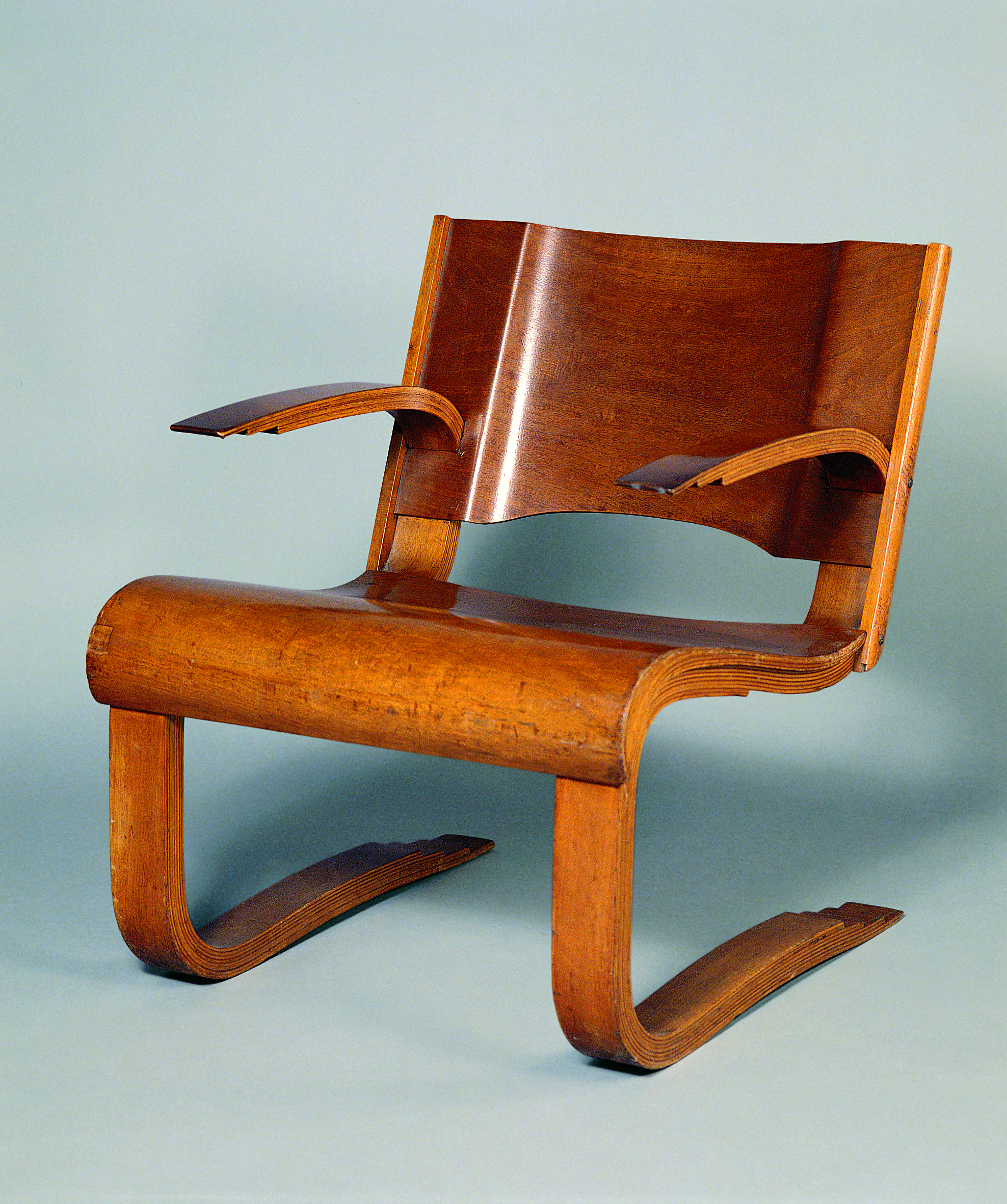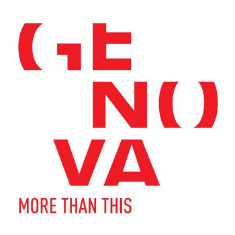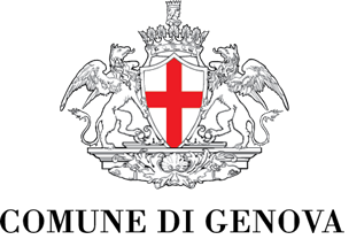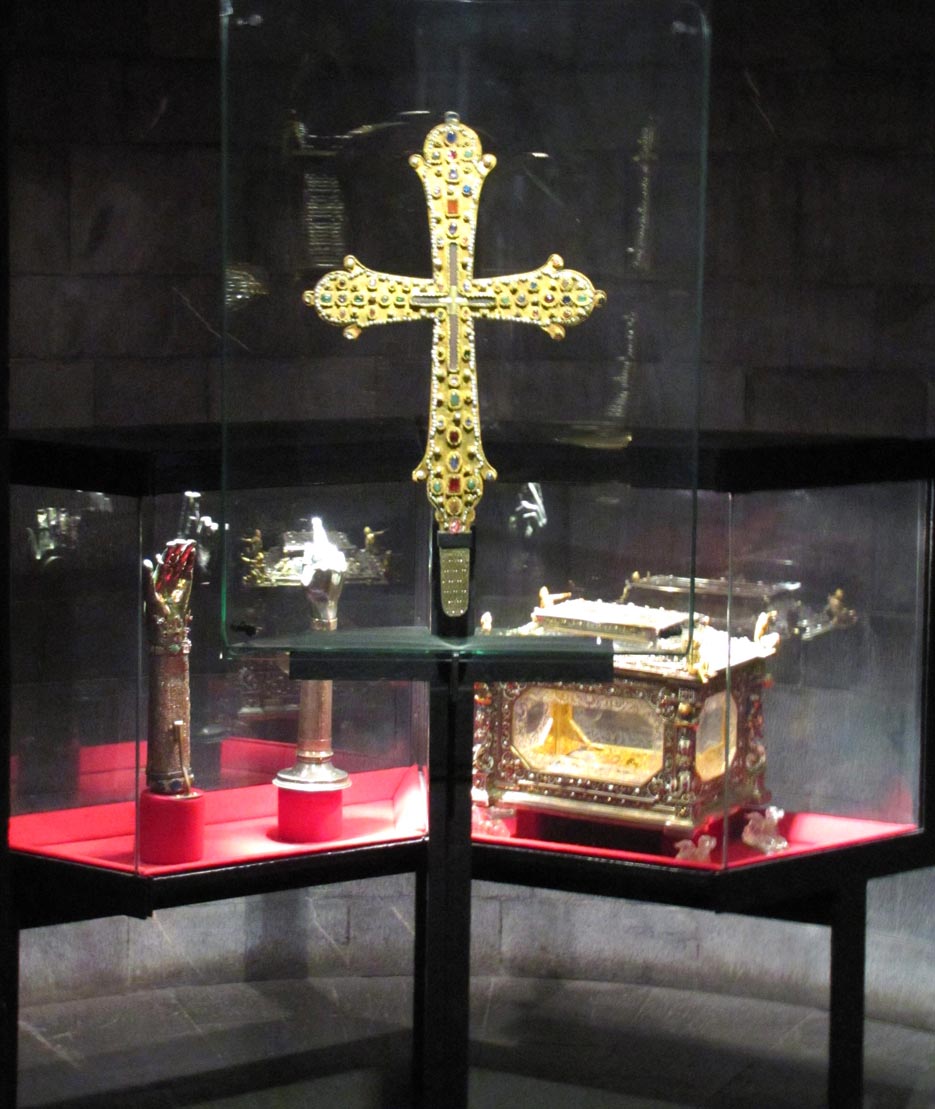
Click here to view image
Byzantine goldsmith, 13th century
Reliquary
Gilded silver, pearls, emeralds, sapphires, garnets, rubies, carnelian agate, non-precious stones, rock crystal, 67.1 x 41 x 1 cm
The front face consists of gold leaf, decorated with precious stones, in the centre of which are preserved fragments of wood that tradition attributes to being parts of the Cross on which Christ was crucified; on the back there are half-length embossed images - below St. John the Evangelist, in the centre the Virgin, and to the sides the archangels Gabriel and Michael, above Christ Pantocrator - and an inscription in Greek that states that this cross was commissioned in the ninth century by Barda, brother of the empress mother of the East Theodolinda, who donated it to the basilica of San Giovanni Evangelista in Ephesus, and that Isaac, bishop of Ephesus between 1260 and 1283, had it reworked in the condition in which it is received, transforming it into a stauroteca, that is to say a reliquary of the True Cross.
It was plundered by the Turks in 1308, but the following year came into the hands of the Genoese family Zaccaria, in the fourteenth century it was donated to the Cathedral of Genoa by the last of member of the family and later it came to be used in the doge's blessing ceremony on election day. It is currently exhibited in the Cathedral on Good Friday.
Loans
Genoa, Palazzo Ducale
from 04/12/1999 to 28/05/2000
for the exhibition “El Siglo de los Genoveses e una lunga storia di Arte e Splendori nel Palazzo dei Dogi”


